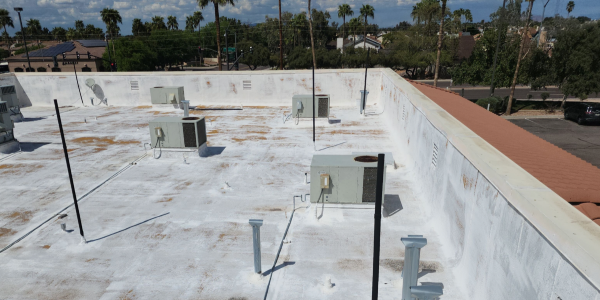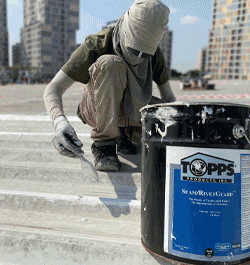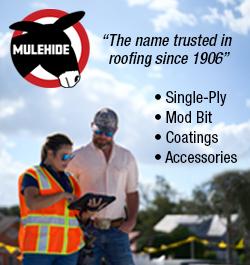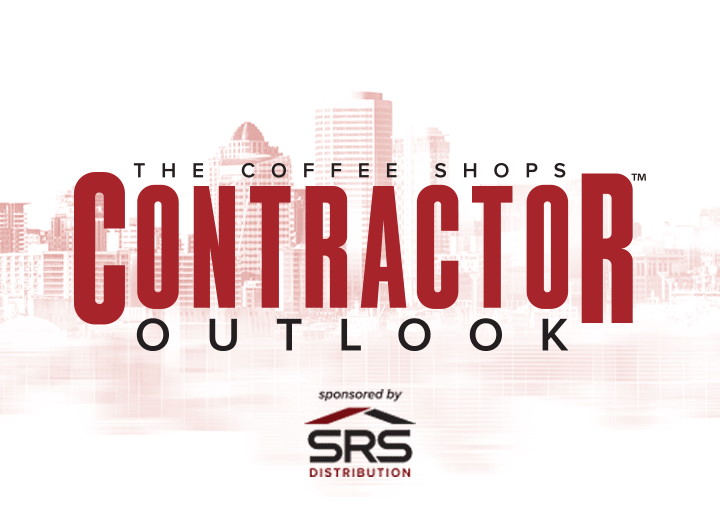UP TO THE MINUTE
Evaluating when a roof is ready for a fluid-applied system
February 29, 2024 at 6:00 a.m.By Emma Peterson.
Learn how to figure out when it’s time for a commercial roof to get a repair versus a restoration.
In this new episode of CoatingsTalk, Chris Kuykendall from Mule-Hide Products spoke to Heidi J. Ellsworth about the process of restoring a roof using a fluid-applied roofing system. Chris started in residential roofing, he then “found fluid applied roofing back when SEBS was a big deal. And from there, the rest is history.” He became a contractor applicator and now works in Texas training others with Mule-Hide. The fluid-applied industry is on the rise and Chris explained, “Not every commercial roof is a good candidate for coating, so we'll talk about that and how to think through that part of fluid-applied restoration.”
The first step is to evaluate the project. This starts with the roof, but also includes other aspects of the building, such as windows and HVAC systems. Chris emphasized, “This is where you're going to do some testing. This is where you're going to do adhesion tests with the type of product that you want to use. This is where you're going to do moisture surveys.” All of this is to assess the state of the roof and see if an applied-fluid system is right for it, and if it is, exactly what it needs based on wear, such as rust.
If the roof is a good candidate for an fluid-applied system, it is time to decide whether it needs a repair or restoration. Chris explained, “Generally speaking, if we've got a lot of trapped moisture, if we've got really old tons of granular loss, open seams, gashes, things like that, we need to be thinking about either re-cover or replacing that.” It is important to make sure you are offering the correct solution to the client to ensure satisfaction and longevity.
From there, it is time to determine the next steps. If it’s ready for a repair, Chris says, “I recommend doing a whole building envelope inspection.” He explains that you want to be sure that there aren’t other factors in play beside the roof before you make your bid. If a restoration is a better fit, it’s time to start considering the different products available.
Read the transcript, Listen to the podcast or Watch the whole episode to learn about choosing the right products for your project.
Learn more about Mule-Hide Products in their Coffee Shop Directory or visit www.mulehide.com.
About Emma
Emma Peterson is a writer at The Coffee Shops and AskARoofer™. Raised in the dreary and fantastical Pacific Northwest, she graduated in 2024 from Pacific University in Oregon with a degree in creative writing and minors in graphic design and Chinese language. Between overthinking everything a little bit, including this bio, she enjoys watching movies with friends, attending concerts and trying to cook new recipes.
Recommended For You

Have spray polyurethane foam roofing questions? We have the answers!
Read More ...
How proper training is key to a project’s success
Read More ...
The 2024 Jim Nienow Memorial Scholarship applications are available!
Read More ...















Comments
Leave a Reply
Have an account? Login to leave a comment!
Sign In